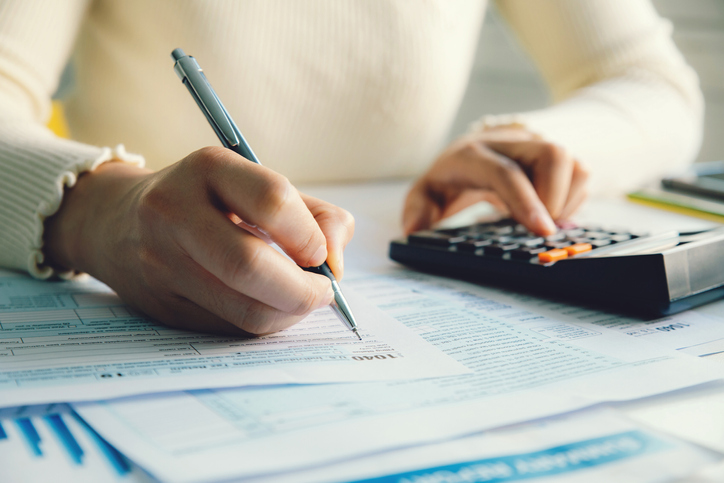Why is tax-free investing so important?
To make tax and investment simple, we explain the benefits of tax allowances and why you should use them.
28th January 2021 19:17
by Rebecca O'Connor from interactive investor
To make tax and investment simple, we explain the benefits of tax allowances and why you should use them.

ISAs have been around for so long now that we almost take them for granted.
But without these tax-free investment wrappers, which currently allow up to £20,000 a year to be invested free of income tax or capital gains tax, we’d be paying a lot more tax.
The same goes for pensions. Although you pay income tax on the income you take from a pension, you don’t pay tax on the gains on the investments held within a pension, and you get tax relief equal to your marginal rate of income tax on your contributions, too.
It’s hard to understand the benefits of these vehicles because to do so, we have to imagine the tax we could face paying if they didn’t exist.
What would our tax bills look like without these tax-free advantages?
In a crude example, let’s say ISAs didn’t exist and you, a higher rate taxpayer, place £200,000 in your investment account. After a year, your portfolio has grown by a very decent 10%, or £20,000. You want to cash in your investments to buy a house. That £20,000 is above the capital gains tax (CGT) allowance, which is currently £12,300, so £7,700 is your taxable gain. You would pay 20% CGT on this gain as a higher rate taxpayer – which is £1,540.
If that money had been saved up in an ISA, there would be no CGT to pay.
Add in the freedom from income tax too, which would normally be payable on dividends above the annual allowance of £2,000, and ISAs become a no-brainer. You can see from the example above that if you make capital gains and dividend income outside an ISA, you are effectively handing much of the growth in the value of your investment over to the taxman.
Keep in mind that a family has a total ISA allowance greater than the £20,000 individual allowance. If you add together two allowances for partners, as well as junior ISAs with £9,000 annual limits each, for two kids, you would have a total annual household ISA allowance of £58,000 for the year.
Pensions
If we turn to pensions, which for most people involve even higher sums and, therefore, even greater potential to save tax. Imagine that over your working life so far, your pension has grown from £0 to £300,000 (including investment growth). You have contributed roughly £6,000 to it every year you have been working. You have always been a basic-rate taxpayer. Every year, your £6,000 pension contribution has attracted tax relief at the basic rate of 20%. That means your £6,000 has actually cost you £4,800. So for - let’s say - 40 years, you have been saving £1,200 a year in tax that you would otherwise have paid. That’s £48,000 over your working life.
On top of this significant tax relief benefit, you won’t pay tax on the capital growth of your pension pot, either, or income tax on any dividends paid. Pensions do come with limits too – the £40,000 annual pension allowance and the lifetime allowance of £1.073 million. Contributions over these limits incur tax charges.
You might read the above and consider that for your long-term retirement saving, pensions look more tax efficient than ISAs. And, on the face of it, that’s right. However there is one key difference, which we explain in more depth in our article on pensions versus ISAs. It’s worth mentioning here too, though: with ISAs, you can take money out tax-free, whenever you want, but with pensions, once you’ve taken your tax-free lump sum, the rest of your pension income is taxable in the same way as your earnings from work.
So to really maximise the benefits of tax-free investing – for retirement at least – you need to use a combination of all of these vehicles.
Once you have filled up your ISA and your pension, if you are also investing for retirement, you can continue to invest in a General Investment Account, or GIA. With these, you don’t get the tax breaks on offer with ISAs, but you can still make gains and dividends up your annual allowances without incurring a tax charge.
These articles are provided for information purposes only. Occasionally, an opinion about whether to buy or sell a specific investment may be provided by third parties. The content is not intended to be a personal recommendation to buy or sell any financial instrument or product, or to adopt any investment strategy as it is not provided based on an assessment of your investing knowledge and experience, your financial situation or your investment objectives. The value of your investments, and the income derived from them, may go down as well as up. You may not get back all the money that you invest. The investments referred to in this article may not be suitable for all investors, and if in doubt, an investor should seek advice from a qualified investment adviser.
Full performance can be found on the company or index summary page on the interactive investor website. Simply click on the company's or index name highlighted in the article.